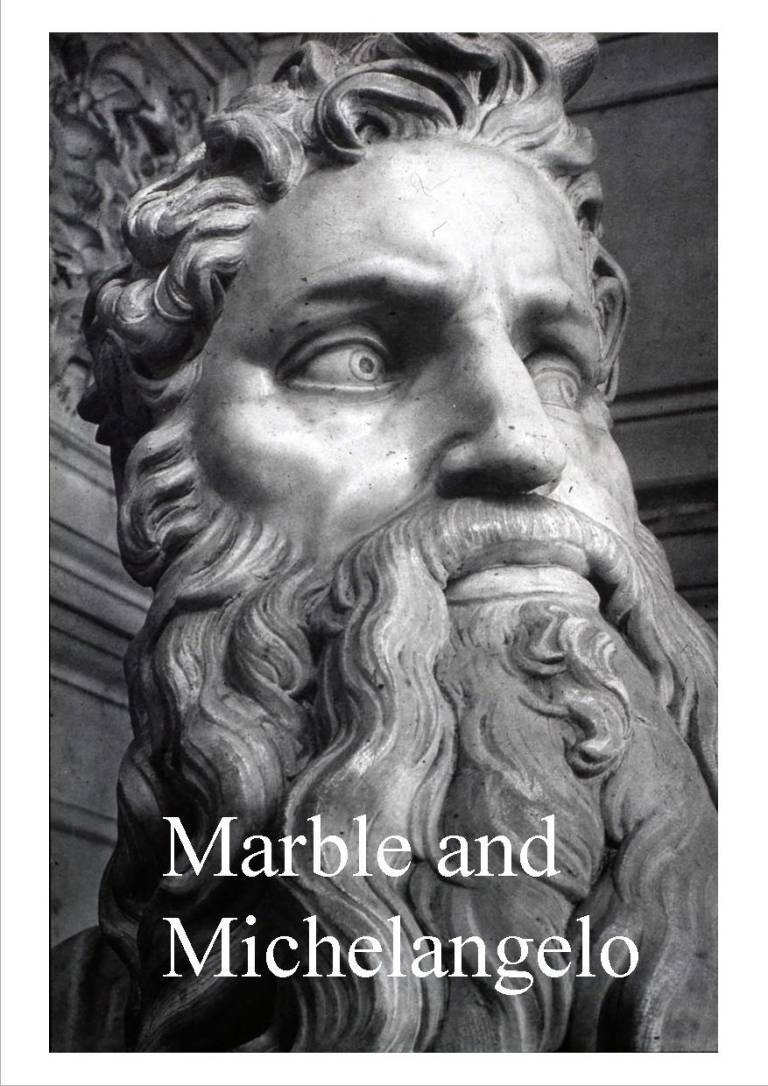MARBLE AND MICHELANGELO
Carrara marble was already known in Roman times, and its nature and limitations are peculiarly significant in understanding the sculpture of Michelangelo. His wet nurse was the wife of a stone mason, and despite his own more elevated family, the young Buonarotti made it his business to keep close to the quarries, for example when selecting personally the blocks for major projects. His sonnet suggests he could merely glance at a piece of marble and see concealed within it a finished sculpture, only awaiting its liberation by his removal of the surplus stone. But reality was not so simple. Drawings and models were made to prepare for each new sculpture, for there can be no major changes of mind in the midst of carving such a hard and expensive material.
Understanding the creative process can explain Michelangelo’s development as a sculptor. During a long life he broke new ground in expressing the three- dimensionality of his figures, as had seldom been done before him. Incomplete works leave many clues as to how his sculptures were made. It is true that in 1508 he completed an over life size bronze statue of Julius 11, but he was not comfortable working in bronze-“not my line” as he said himself. As fate would have it, the statue was destroyed less than four years later by the Bolognese, still angry that their city had earlier been conquered by the warrior Pope.
Even when painting the Sistine Ceiling, Michelangelo is thinking of marble sculptures, though the actual outcome is the series of heroic painted nudes in the famous frescoes. His whole aesthetic of the figure is based on the marble block, within which the body must fit- there must be no projecting arms or legs such as seem completely normal in bronze figures, “One must be able to roll the statue down a hill without any significant losses”. Thus to understand fully the art of Michelangelo, one must grasp the nature and properties of marble.
